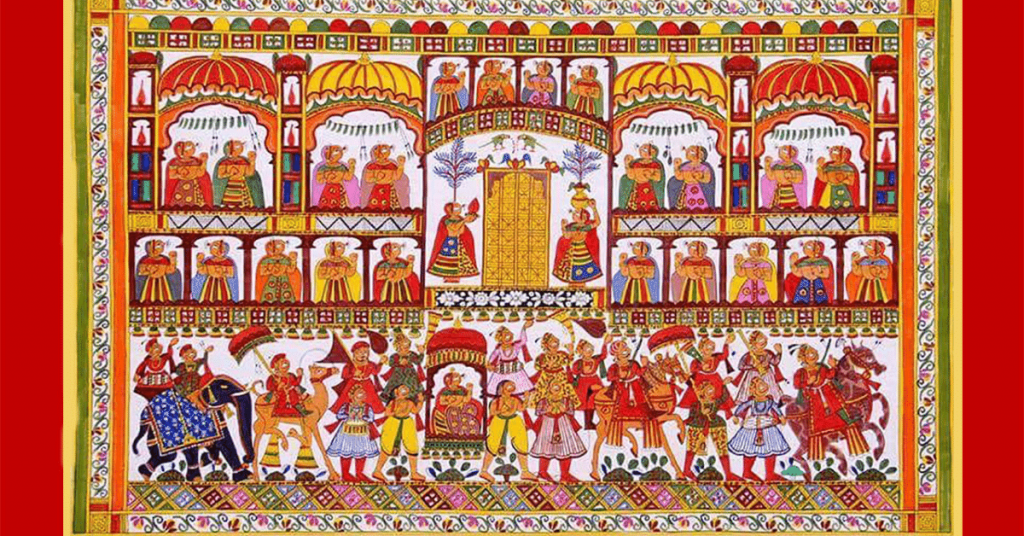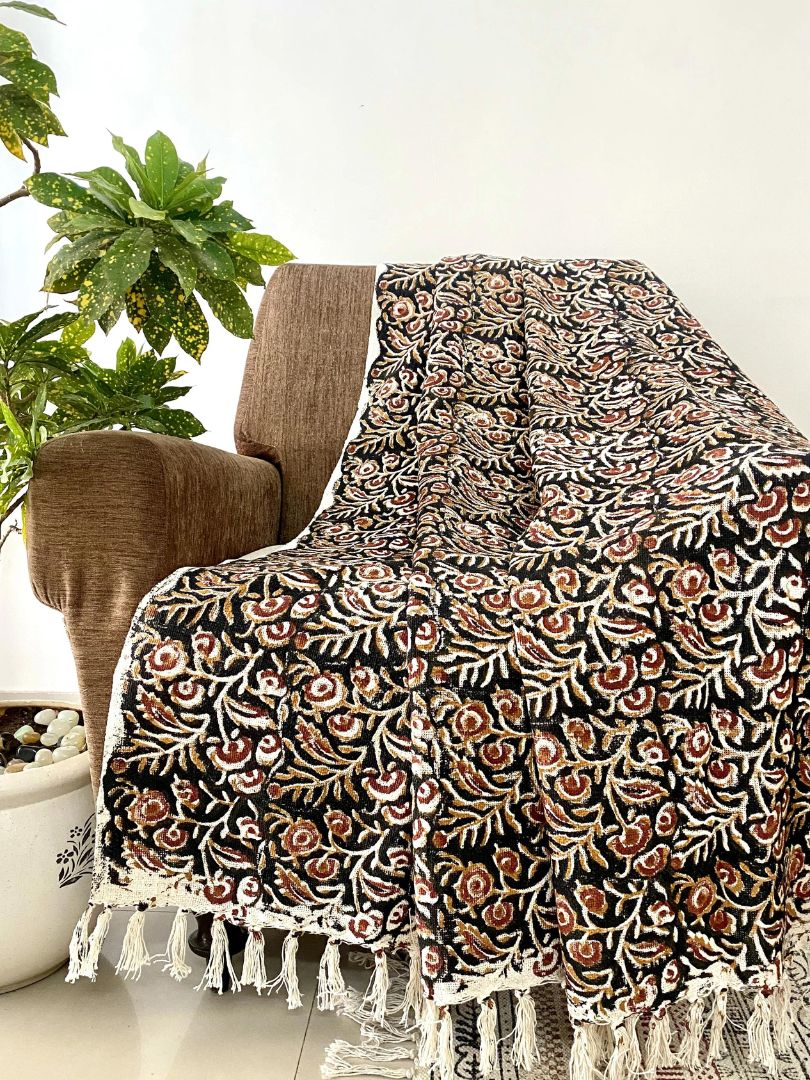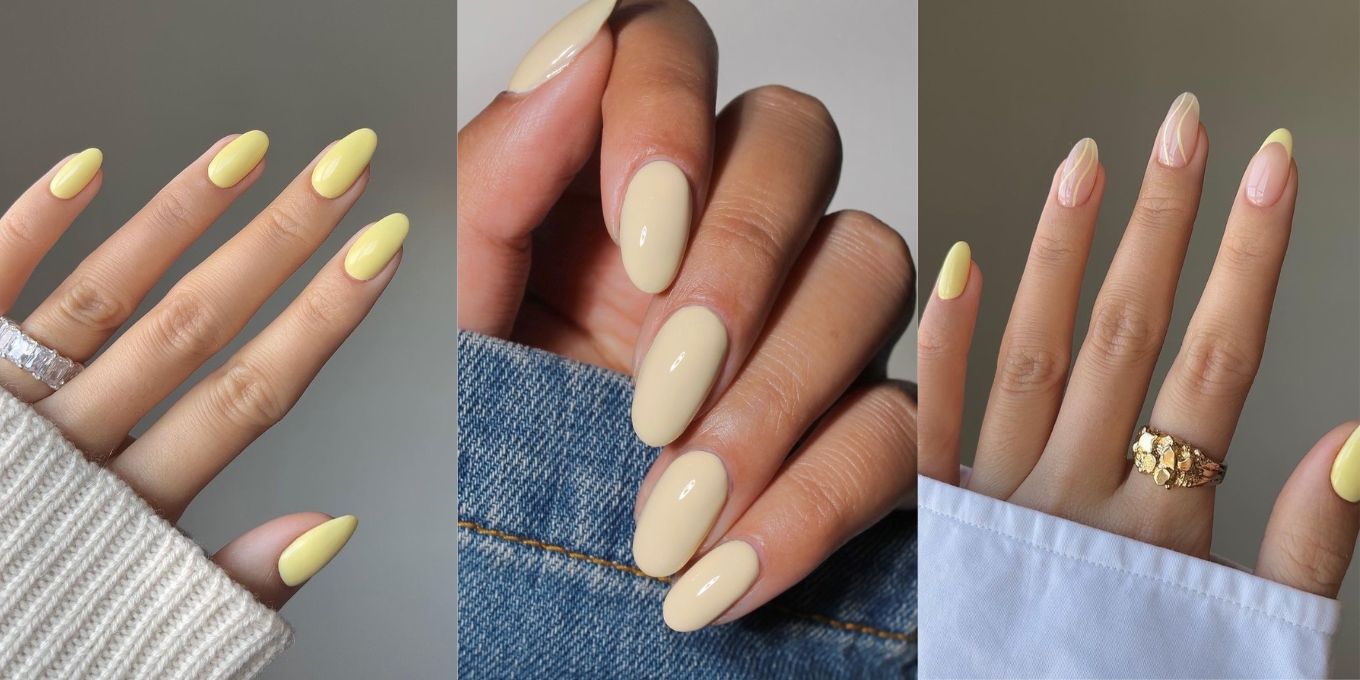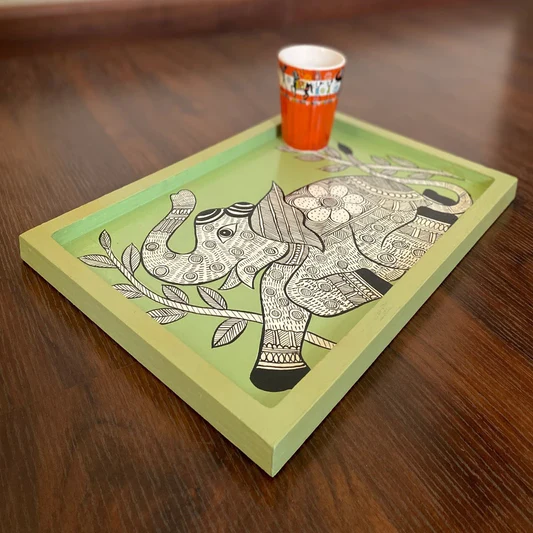The Role of Phad Paintings in Rajasthan’s Folk Culture
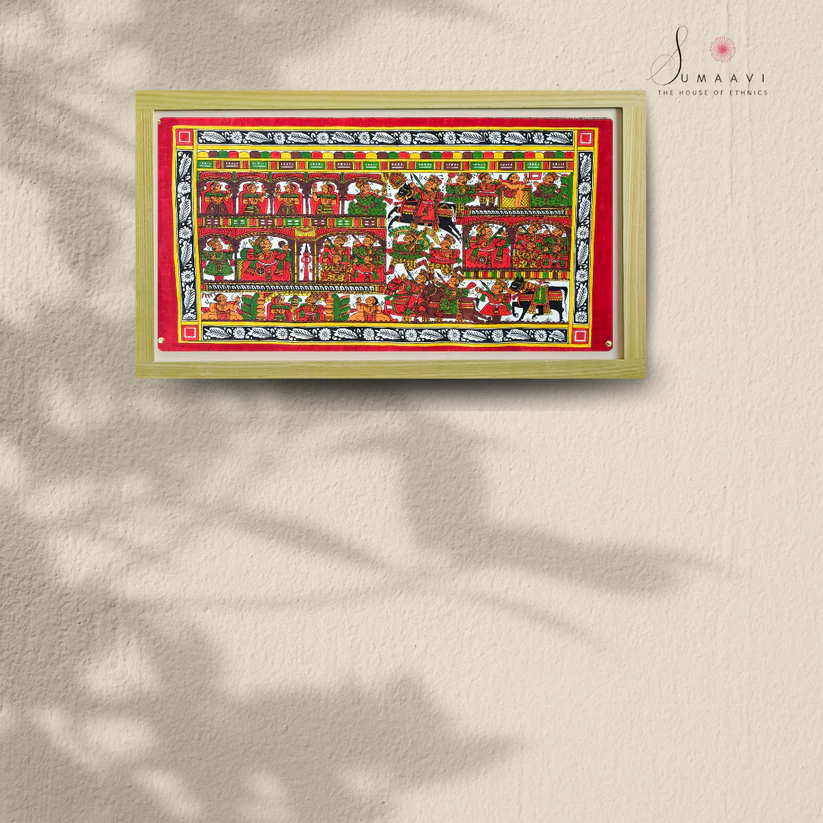
Phad paintings are a significant part of Rajasthan’s cultural heritage, blending storytelling and artistry into a unique visual tradition. These paintings are not merely decorative but serve as visual narratives of historical legends, religious epics, and folk tales. Let’s explore the rich history, artistic techniques, and cultural significance of Phad paintings in Rajasthan.
What Are Phad Paintings and How Did They Originate?
Phad paintings are a centuries-old art form that originated in Rajasthan, particularly in the Bhilwara and Shahpura regions. These paintings are traditionally made on a long scroll of fabric, depicting stories of local deities, folk heroes, and mythological events.
The most commonly featured figures in Phad paintings are Pabuji and Devnarayan, revered folk deities of Rajasthan. These paintings were historically carried by Bhopas (priest-singers) who narrated the stories to rural communities, using the Phad as a visual aid.
The Evolution of Phad Paintings
Over time, Phad paintings have evolved while retaining their core identity. Initially painted using natural dyes and organic colors, these artworks now incorporate modern materials without losing their traditional essence. The art form was once exclusively practiced by the Joshi family, but today, many artists have taken up this intricate craft, ensuring its preservation.
What Makes Phad Paintings Unique?
Several characteristics distinguish Phad paintings from other Indian folk art forms:
-
Narrative Style: Unlike other static paintings, Phad tells an evolving story across a long scroll.
-
Use of Natural Colors: Traditionally, artists use vegetable dyes made from plants, stones, and minerals.
-
Intricate Details: Every painting is filled with minute details, portraying scenes with expressive human figures, animals, and temples.
-
Continuous Flow: The sequential storytelling in Phad paintings makes them look like a visual manuscript rather than a standalone artwork.
The Cultural and Religious Importance of Phad Paintings
Phad paintings hold immense religious and cultural importance in Rajasthan. They serve as visual scriptures, helping communities preserve their traditions.
Role in Religious Rituals
Phad paintings were originally used as mobile temples by Bhopas, who traveled from village to village, performing religious recitals. The paintings played a key role in bringing communities together for spiritual gatherings and festivals.
Symbolism and Themes
The themes of Phad paintings are deeply rooted in devotion, valor, and mythology. Some of the common depictions include:
-
The life and miracles of Devnarayan
-
The heroic deeds of Pabuji
-
Scenes from Ramayana and Mahabharata
-
Folk tales of Rajasthan’s legendary warriors and saints
These paintings not only tell religious stories but also celebrate Rajasthani folklore, making them an integral part of the region’s identity.
How Phad Paintings Are Made: The Traditional Process
The making of a Phad painting is a time-consuming process that involves multiple stages, each requiring skill and patience.
1. Choosing the Canvas
Traditionally, Phad paintings are made on handwoven cotton or khadi cloth. The fabric is soaked overnight and then rubbed with a mixture of wheat flour and gum to give it a smooth texture.
2. Sketching the Design
The artist starts by drawing the rough outline using a charcoal pencil. The characters and elements are then detailed in a sequential storytelling pattern.
3. Preparing Natural Colors
One of the most fascinating aspects of Phad paintings is their natural color palette, created from minerals, herbs, and flowers. Some common colors used include:
-
Yellow (Made from turmeric or limestone)
-
Red (Extracted from stones)
-
Green (From indigo or leaves)
-
Blue (Derived from lapis lazuli)
-
Black (Made using soot or burnt wood)
4. Filling in the Colors
Once the outline is complete, the artist carefully fills in the colors in multiple layers. Each section is painted one color at a time, ensuring a vibrant and balanced look.
5. Adding the Final Details
The final step involves adding minute details using a fine brush. Expressions, jewelry, and clothing patterns are intricately drawn to make the painting visually rich.
Modern Adaptation of Phad Paintings
While Phad paintings have deep traditional roots, they have also adapted to modern times. Many artists now incorporate contemporary themes, abstract styles, and personalized storytelling into their works.
Additionally, with the rise of e-commerce, it is now possible to explore and purchase Pichwai Paintings Online here. Likewise, if you are looking for authentic Best Phad Paintings Online, you can find them here.
Why Should We Preserve Phad Paintings?
The survival of Phad paintings is essential not only for Rajasthan’s cultural heritage but also for India’s artistic legacy. Here’s why:
-
Preserving Traditional Artistry: Phad paintings represent a rare and intricate form of storytelling that must be preserved for future generations.
-
Supporting Local Artisans: Buying authentic Phad paintings helps support traditional artists and keeps their craft alive.
-
Cultural Identity: These paintings reflect Rajasthan’s folklore, history, and religious beliefs, making them an invaluable cultural asset.
How Can You Help?
If you are passionate about traditional Indian art, you can contribute to the preservation of Phad paintings by:
-
Learning More: Educate yourself and others about Phad paintings through books, documentaries, and workshops.
-
Supporting Artisans: Buy authentic artworks directly from artists or trusted platforms.
-
Promoting the Art Form: Share information about Phad paintings to help raise awareness.
Conclusion
Phad paintings are more than just decorative art; they are living traditions that narrate the soul of Rajasthan. These vibrant, detailed paintings serve as both a cultural treasure and a historical archive, keeping ancient stories alive for generations to come. By appreciating, purchasing, and learning about Phad paintings, we can ensure their survival and continued legacy in the world of art.

